- Home
- Tom Clancy
Carrier: A Guided Tour of an Aircraft Carrier Page 2
Carrier: A Guided Tour of an Aircraft Carrier Read online
Page 2
Unfortunately, aircraft carriers and naval forces in general have often been seen as both provocative and vulnerable. Many critics who do not understand the science of modern naval operations have claimed that advances in space systems and missile technology make the carrier/naval forces excessively vulnerable to air and missile attacks. Certainly technology has increased the threat from these systems, but far less so than that faced by fixed land bases and ground forces from terrorism and ballistic missile attacks.
For starters, there is the challenge to any would-be enemy who would try to find a CVBG in the open ocean. Naval units are highly mobile and the world’s oceans are a big, dynamic place. Trying to coordinate sophisti-catedlong-range targeting solutions onto a target that can move thirty nautical miles in any direction in just one hour, or up to seven hundred nautical miles in a day, is a tough business. Clearly, a CVBG is not an easy target. The inherent mobility, together with sophisticated CVBG electronic-warfare-deception packages (radar “blip” enhancers, target decoys, etc.), combined with the air defenses provided by our Aegis-equipped escorts (Ticonderoga-class [CG-47] cruisers and Arleigh Burke-class destroyers [DDG-51]) as well as the CVN’s own organic aircraft, make the vulnerability quite manageable.
The threat of theater ballistic and cruise missiles is also a matter of concern for the CVBG, and work is rapidly progressing to increase our defenses against these classes of weapons. The Aegis combat system is being improved and extended to be able to provide theater-wide defense from the sea, for both land and sea forces. Survivability from these threats will always be greater from a mobile bastion at sea than a fixed base on land. Arriving along with this new capability are new aircraft, ships, and even new carrier designs, which will help keep the CVBG credible long after the last manned-aircraft designs are retired. However, one does not have such naval forces for purely defensive purposes.
The real strength of CVBGs is offensive, making them a threat to the very despots and enemies that might themselves wish ill to the carrier group. Able to generate hundreds of air and missile attack sorties day and night, the modern CVBG is a powerful tool that requires no permission of ally or foe to do its job. Today, when the challenge is to get the most return for our limited defense dollars, it is significant to note that since the end of World War II, we have not lost any carriers to enemy action or geopolitical changes.
This is hardly true in the case of our overseas land bases. In such countries as Iran, Libya, Vietnam, and the Philippines to name just a few, we not only lost the airfields that the U.S. paid for, but also the costly infrastructure devoted to support, maintenance, and quality-of-life issues. There also is the fact that we pay a high monetary and often unacceptable political price for even restricted access to foreign military land and air bases. As recently as 1997, the U.S. was not allowed to place the desired number of USAF aircraft in Saudi Arabia, where the U.S. presence was already established. From this viewpoint, the aircraft carrier, which has a forty-five-year life cycle and remains free from such entanglements, is a relative bargain for our scarce defense dollars.
As a new crop of world economic and potential military superpowers emerge in the coming years, the value of aircraft carriers to U.S. foreign policy goals will dramatically increase. One of the unchallenged realities of modern warfare is that you cannot be victorious in any conflict on the ground or at sea without air/space superiority. In an era of sophisticated precision weapons, including cruise and ballistic missiles, this is the medium that enables our land and sea forces to operate with acceptable risk. Air superiority is even more essential for forward-deployed forces that are shaping the battlespace, trying to create stability and prevent conflict from occurring through their own forward presence. In more and more cases, this flexible combat power will have to be provided by forward-deployed carrier and amphibious groups. This is a reality since the world’s surface is 70% covered by water, and our free-market economy depends on open access to the sea lines of communication.
Naval forces are more than just ships, planes, and weapons. What I hope this book conveys is the quality and dedication of the people it takes to provide the nation the kind of flexibility and fighting punch packaged in our modem CVBGs. The carriers, Aegis cruisers, and destroyers, together with their aircraft and fast-attack submarines, would be nothing without the people who make them work. Operating a high-usage airport in day and night operations, while moving at thirty knots on the open seas, is one thing. However, to provide all the organic support to do this for extended periods of time at a great distance from a home base is another thing all together.
A modern Nimitz-class (CVN-68) carrier is the equivalent of a small American city packaged into just four-and-a-half acres. This city not only operates an airport on its roof, but also can move over seven hundred nautical miles in any given day. It also provides full medical support, machine shops, jet engine test cells, food service operations, computer support, electrical generation, and almost everything else that you can imagine.
Now picture the carrier as a business, a company that has a net worth of six to seven billion dollars and employs over six thousand people. The average age of the six thousand employees is less than twenty-one years. On top of this, the Chairman of the Board (Admiral and Staff), the President and Chief Operating Officer (Captain and Air Wing Commander), all the Vice Presidents (Department Heads), and every other employee rotates out of the company every two to three years. Common sense would dictate that you could never make a profit with any business under those conditions. Yet the U.S. Navy operates successfully under these very conditions, and the profit is freedom, and protection of our national interests.
This dedication of young Americans, the symphony of their teamwork, and the indomitable spirit of the American sailor make this all possible. We owe them our respect and gratitude, and must never take the service or sacrifices they and their families make for granted. It was my privilege to be a shipmate with these great Americans for over thirty-seven years. For this I salute the American Sailors, Marines, Soldiers, Airmen, and Coast Guards-men of every generation who have protected our freedom at home and around the world.
—Leon A. “Bud” Edney
Admiral, USN (Retired)
Former Commander, U.S. Atlantic Command &
NATO Supreme Allied Commander, Atlantic
Introduction
Presence, influence, and options. In these three words are the basic rationale for why politicians want carrier battle groups, and have been willing to spend over a trillion U.S. taxpayer dollars building a dozen for American use. That was hardly the original reason, though. Back in the years after the Great War, naval powers were trying to find loopholes in the first series of arms-control treaties (which had to do with naval forces). With the numbers and size of battleships and other vessels limited by the agreements, various nations began to consider what ships carrying aircraft might be able to contribute to navies. At first, the duties of these first carrier-borne aircraft were limited to spotting the fall of naval shells and providing a primitive fighter cover for the fleet. Within a few years, though, aircraft technologies began to undergo a revolutionary series of improvements. Metal aircraft structures, improved power plants and fuels, as well as the first of what we would call avionics began to find their way onto airplanes. By the outbreak of World War II, some naval analysts and leaders even suspected that carriers and their embarked aircraft might be capable of sinking the same battleships and other surface ships that they had originally been designed to cover.
The Second World War will be remembered by naval historians as a conflict dominated by two new classes of ships: fast carriers and submarines. The diesel-electric submarines were a highly efficient force able to deny navies and nations the use of the sea-lanes for commerce and warfare. Unfortunately, as the German Kriegsmarine and Grand Admiral Karl Donitz found, you do not win wars through simple denial of a battlespace like the Atlantic Ocean. Victory through seapower requires the ability to take
the offensive on terms and at times of your choosing. This means being able to dominate vast volumes of air, ocean, and even near-earth space. Without a balanced force to project its power over the entire range of possibilities and situations, one-dimensional forces like the U-boat-dominated Kriegsmarine wound up being crushed in the crucible of war.
By contrast, the carriers and their escorts of World War II were able to project offensive power over the entire globe. From the North Cape to the islands of the Central Pacific, carrier-based aircraft dominated the greatest naval war in history. Along the way, they helped nullify the threat from Germany’s U-boats and other enemy submarines, as well as sweeping the seas of enemy ships and aircraft. While the eventual Japanese surrender may have been signed aboard the battleship Missouri in Tokyo Bay, it occurred in the shadow of a sky blackened by hundreds of carrier aircraft flying overhead in review. Called “Halsey’s Folly,” the flyover was the final proof of the real force that had ended the second global war of this century. Despite the claims of Air Force leaders who pronounced navies worthless in an era of nuclear-armed bombers, when the next shooting conflict erupted in Korea, it was carrier aircraft that covered the withdrawal to the Pusan Perimeter and the amphibious landings at Inchon. They then dropped into a role that would become common in the next half-century, acting as mobile air bases to project combat power ashore.
Despite the best efforts of the former Soviet Union to develop a credible “blue-water” fleet during the Cold War, the U.S. Navy never lost control of any ocean that it cared about. One of the big reasons for this was the regular presence of carrier battle groups, which took any sort of “home-court advantage” away from a potential enemy. Armed with aircraft that were the match of anything flying from a land base, and flown by the best-trained aviators in the world, the American carriers and their escorts were the “eight-hundred-pound guerrillas” of the Cold War naval world. This is a position that they still hold to this day. However, their contributions have taken on a deadly new relevance in the post-Cold War world.
One of the tragic truths about America’s winning of the Cold War was that we did it with anyone who would help us. This meant that the U.S. frequently backed any local dictator with a well-placed air or naval base and a willingness to say that Communism was bad. The need to contain the ambitions of the Soviet Union and their allies took a front seat to common sense and human rights. The result was a series of alliances with despots ranging from Ferdinand Marcos to Manuel Noriega. However, there was a war to win and we did win it. The price, however, is what we are paying today. Around the world, Americans are being asked to please pack up their aircraft, ships, and bases and please take them home. We should not be offended; we did it to ourselves. The continuing legacy of squalor in places like Olongapo City in the Philippines and other “outside the gate” towns was more than the emerging democracies of the post-Cold War era could stand. When you add in our continued interference in the internal politics of the countries that hosted our bases, it is a wonder that we have any friends left in the world as the 20th century ends.
Our poor foreign policy record aside, the United States and our allies still have a number of responsibilities in the post-Cold War world. This means simply that to wield military force in a crisis, we now have just a few options. One is to ask nicely if a friendly host nation might allow us to base personnel, aircraft, and equipment on their soil so that we can threaten their neighbors with military force. As might be imagined, this can be a tough thing to do in these muddled times. George Bush managed to do it in the Persian Gulf in 1991, but Bill Clinton failed in the same task in 1997 and 1998. Even with a dictator like Saddam Hussein, most regional neighbors would rather tolerate the bully than risk the death and destruction that occurred in Kuwait in 1990 and 1991. This leaves just two other credible options; to base military power at homeland bases or aboard sovereign flagged ships at sea. The first of these options means that fleets of transport ships and aircraft must be maintained just to move them to the place where a crisis is breaking out. It also takes time to move combat aircraft and ground units to the places where trouble may be brewing. This is why having units forward-based aboard ships is so incredibly important to us these days.
Time in a crisis is more precious than gold. As much as any other factor, the time delay in responding to a developing conflict determines whether it results in war, peace, or a distasteful standoff. While we may never know for sure, there is a good chance that Saddam Hussein stopped at the Saudi border in 1990 because of the rapid flood of U.S. and coalition forces into the Kingdom. However, it would be a tough act to duplicate today. One of the benefits of our military buildup in the late years of the Cold War was the ability to do both of these things well. Along with lots of continental-based forces with excellent transport capabilities, we usually had a number of carrier and amphibious groups forward-based to respond to crises. However, these rich circumstances are now just happy memories.
Today the U.S. Navy considers itself lucky to have retained an even dozen carrier battle groups, along with their matched amphibious ready groups. By being able to keep just two or three of these forward-deployed at any time, the United States has managed to maintain a toehold in places where it has few allies and no bases. The recent confrontation with Iraq over United Nations weapons inspectors, had it led to war, would have been prosecuted almost entirely from a pair of carrier groups based in the Persian Gulf. With the 1990/91 allied coalition splintered over each country’s regional interests, almost nobody would allow U.S. warplanes and ground forces onto their soil. This is a 180° change from 1990/91, when the majority of Allied airpower was land-based.
This brings us back to the three words at the beginning of this introduction: presence, influence, and options. Naval forces generally provide presence. Carrier groups, though, dominate an area for hundreds of miles/ kilometers in every direction, including near-earth space. While a frigate or destroyer impresses everyone who sees it, a carrier group can change the balance of military and political power of an entire region. A weak country backed by an American carrier group is going to be much tougher to overthrow or invade for a local or regional rogue state or warlord. That is the definition of international presence these days. Finally, there is the matter of options.
In the deepest heart of every politician, there is a love of options. Having choices in a tough situation is every politician’s greatest desire, and carrier groups give them that. It is one of the oddities of national politics that until they become President or Prime Minister, politicians frequently and publicly view large military units like carrier groups as a waste of taxpayer money. However, let the politicians hit the top of a nation’s political food chain, and they sing another tune entirely. It is almost a matter of national folklore that every Chief Executive will, at some time in their Presidency, ask those four famous words: “Where are the carriers?” It certainly has been the case since Franklin Roosevelt haunted the halls of the White House. Today, in fact, the use of forward-deployed forces afloat may be the only option open to a national leader.
Understanding aircraft carriers and their associated aircraft and battle group escorts is not an easy task. Focusing only on the flattop is like tunnel vision, since the carrier’s own weapons are purely defensive and quite short-ranged. To fully understand what effects a carrier group moving into your neighborhood is going to have, it is necessary to look beyond the carrier’s bulk and dig deeper. You must look into the embarked air wing with its wide variety of aircraft and weapons, as well as the escorts. These range from Aegis-equipped missile cruisers and destroyers, to deadly nuclear-powered attack submarines. Armed with surface-to-air missiles and Tomahawk cruise missiles, they not only protect the carrier from attack, but have their own mighty offensive punch as well. To see it all takes a wider, deeper look than you are likely to find on the nightly news or in your daily newspaper. To do that requires that you spend time with people. Lots of people. These include the Navy’s leaders, who mak
e the policy decisions and have the responsibility of keeping our Navy the best in the world. You also need to spend some time with the folks who build the ships, aircraft, and weapons that make the force credible and dangerous. Finally, you have to know the thousands of people who run the battle groups and sail them to the places where they are needed across the globe.
I hope as you read this book that you get some sense of the people, because it is they that are the real strength of the carrier groups, and our nation. While you and I stay home safe and warm in the company of our families and loved ones, they go out for months at a time to put teeth into our national policies and backbone into our words. It is they who make the sacrifices and perhaps pay the ultimate price. I hope you see that in these pages, and you think of them as you get to know the “heavy metal” of the U.S. Navy up close. If you do, I think that you will gain a real perspective on their difficult, but vital, profession.
—Tom Clancy
July 1998
Naval Aviation 101
“Where are the carriers?”
Every American President since
Franklin Delano Roosevelt
Aircraft carriers stretch perceptions. First of all, they’re big—bigger than most skyscrapers—skyscrapers that can move across the sea at a better than fair clip. And yet, despite their great size, when you watch flight operations on the flight deck (usually as busy as a medium-sized municipal airport), you can’t help but wonder how so much gets done in such a tiny space. They not only stretch perceptions, they stretch the limits of the nation’s finances and industrial capacity; and they stretch credibility. It’s hard to find a weapon that raises more controversy.

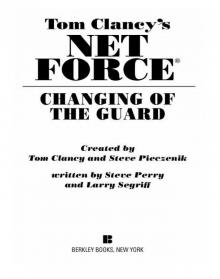 Changing of the Guard
Changing of the Guard Clear and Present Danger
Clear and Present Danger Hounds of Rome
Hounds of Rome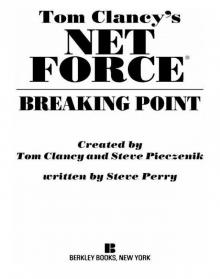 Breaking Point
Breaking Point Tom Clancy's Jack Ryan Books 7-12
Tom Clancy's Jack Ryan Books 7-12 Full Force and Effect
Full Force and Effect The Archimedes Effect
The Archimedes Effect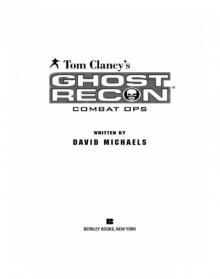 Combat Ops
Combat Ops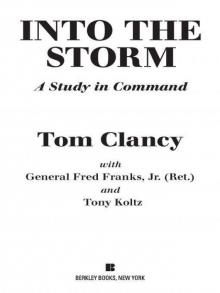 Into the Storm: On the Ground in Iraq
Into the Storm: On the Ground in Iraq Under Fire
Under Fire Point of Impact
Point of Impact Red Rabbit
Red Rabbit Rainbow Six
Rainbow Six The Hunt for Red October
The Hunt for Red October The Teeth of the Tiger
The Teeth of the Tiger Conviction (2009)
Conviction (2009)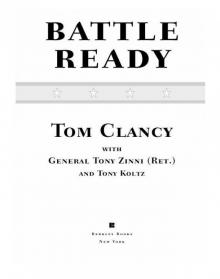 Battle Ready
Battle Ready Patriot Games
Patriot Games The Sum of All Fears
The Sum of All Fears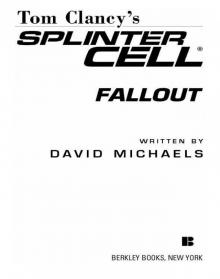 Fallout (2007)
Fallout (2007) Red Storm Rising
Red Storm Rising The Cardinal of the Kremlin
The Cardinal of the Kremlin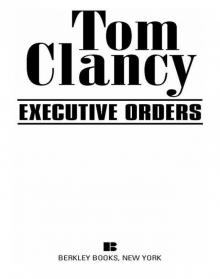 Executive Orders
Executive Orders Lincoln, the unknown
Lincoln, the unknown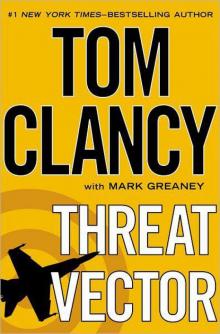 Threat Vector
Threat Vector The Hunted
The Hunted Shadow Warriors: Inside the Special Forces
Shadow Warriors: Inside the Special Forces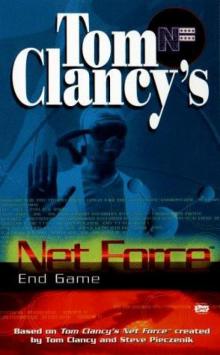 End Game
End Game Special Forces: A Guided Tour of U.S. Army Special Forces
Special Forces: A Guided Tour of U.S. Army Special Forces Locked On
Locked On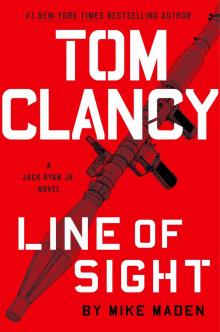 Line of Sight
Line of Sight Tom Clancy Enemy Contact - Mike Maden
Tom Clancy Enemy Contact - Mike Maden Fighter Wing: A Guided Tour of an Air Force Combat Wing
Fighter Wing: A Guided Tour of an Air Force Combat Wing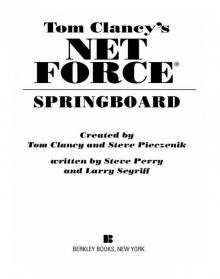 Springboard
Springboard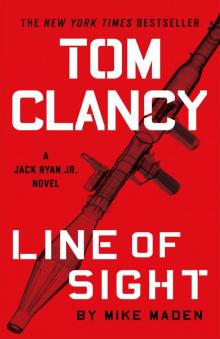 Line of Sight - Mike Maden
Line of Sight - Mike Maden EndWar
EndWar Dead or Alive
Dead or Alive Tom Clancy Support and Defend
Tom Clancy Support and Defend Checkmate
Checkmate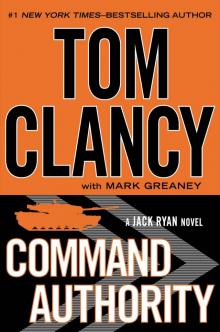 Command Authority
Command Authority Carrier: A Guided Tour of an Aircraft Carrier
Carrier: A Guided Tour of an Aircraft Carrier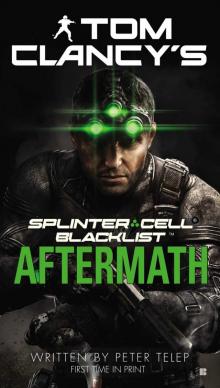 Blacklist Aftermath
Blacklist Aftermath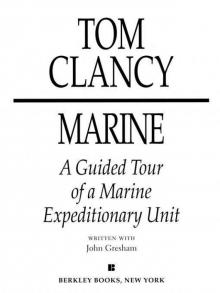 Marine: A Guided Tour of a Marine Expeditionary Unit
Marine: A Guided Tour of a Marine Expeditionary Unit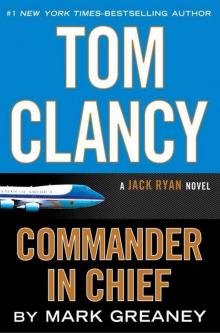 Commander-In-Chief
Commander-In-Chief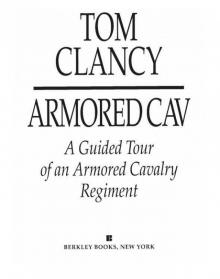 Armored Cav: A Guided Tour of an Armored Cavalry Regiment
Armored Cav: A Guided Tour of an Armored Cavalry Regiment Tom Clancy's Jack Ryan Books 1-6
Tom Clancy's Jack Ryan Books 1-6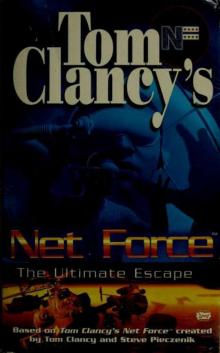 The Ultimate Escape
The Ultimate Escape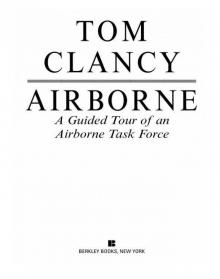 Airborne: A Guided Tour of an Airborne Task Force
Airborne: A Guided Tour of an Airborne Task Force Debt of Honor
Debt of Honor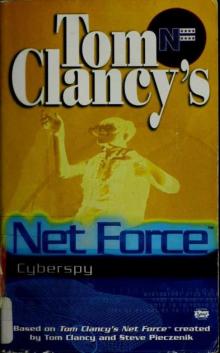 Cyberspy
Cyberspy Point of Contact
Point of Contact Operation Barracuda (2005)
Operation Barracuda (2005)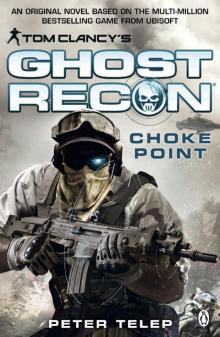 Choke Point
Choke Point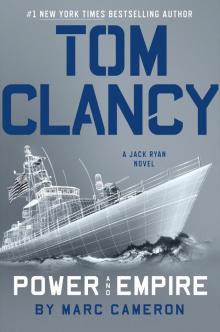 Power and Empire
Power and Empire Every Man a Tiger: The Gulf War Air Campaign
Every Man a Tiger: The Gulf War Air Campaign Endgame (1998)
Endgame (1998)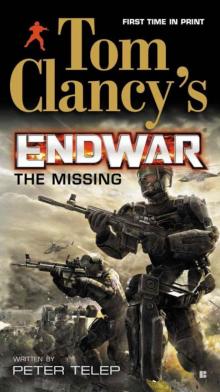 EndWar: The Missing
EndWar: The Missing Splinter Cell (2004)
Splinter Cell (2004) The Great Race
The Great Race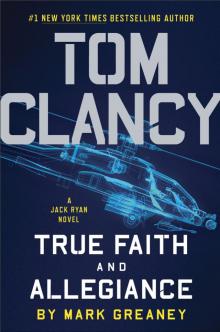 True Faith and Allegiance
True Faith and Allegiance Deathworld
Deathworld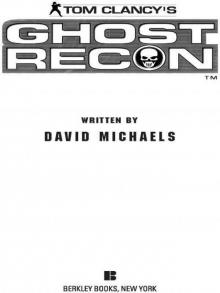 Ghost Recon (2008)
Ghost Recon (2008) Duel Identity
Duel Identity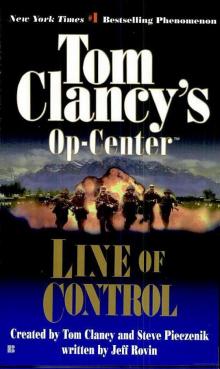 Line of Control o-8
Line of Control o-8 The Hunt for Red October jr-3
The Hunt for Red October jr-3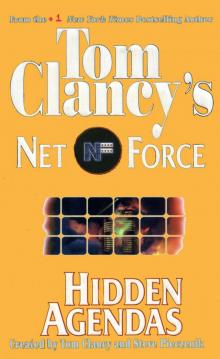 Hidden Agendas nf-2
Hidden Agendas nf-2 Acts of War oc-4
Acts of War oc-4 Ruthless.Com pp-2
Ruthless.Com pp-2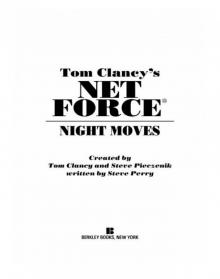 Night Moves
Night Moves The Hounds of Rome - Mystery of a Fugitive Priest
The Hounds of Rome - Mystery of a Fugitive Priest Into the Storm: On the Ground in Iraq sic-1
Into the Storm: On the Ground in Iraq sic-1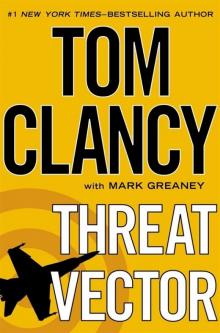 Threat Vector jrj-4
Threat Vector jrj-4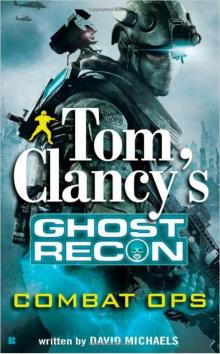 Combat Ops gr-2
Combat Ops gr-2 Virtual Vandals nfe-1
Virtual Vandals nfe-1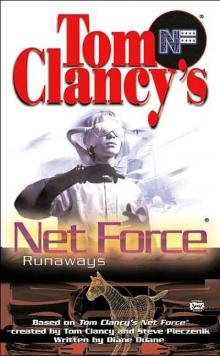 Runaways nfe-16
Runaways nfe-16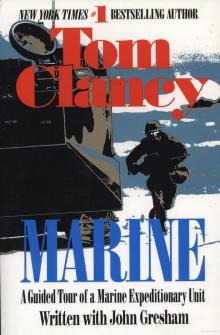 Marine: A Guided Tour of a Marine Expeditionary Unit tcml-4
Marine: A Guided Tour of a Marine Expeditionary Unit tcml-4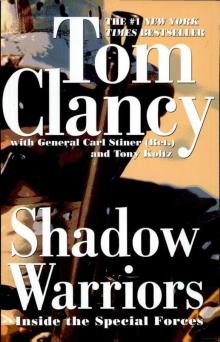 Shadow Warriors: Inside the Special Forces sic-3
Shadow Warriors: Inside the Special Forces sic-3 Jack Ryan Books 1-6
Jack Ryan Books 1-6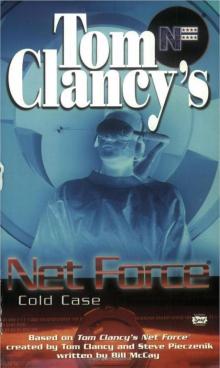 Cold Case nfe-15
Cold Case nfe-15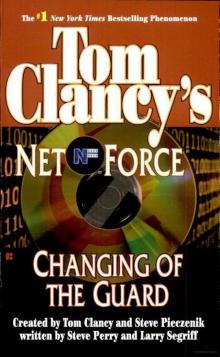 Changing of the Guard nf-8
Changing of the Guard nf-8 Splinter Cell sc-1
Splinter Cell sc-1 Battle Ready sic-4
Battle Ready sic-4 The Bear and the Dragon jrao-11
The Bear and the Dragon jrao-11 Fighter Wing: A Guided Tour of an Air Force Combat Wing tcml-3
Fighter Wing: A Guided Tour of an Air Force Combat Wing tcml-3 Patriot Games jr-1
Patriot Games jr-1 Jack Ryan Books 7-12
Jack Ryan Books 7-12 Mission of Honor o-9
Mission of Honor o-9 Private Lives nfe-9
Private Lives nfe-9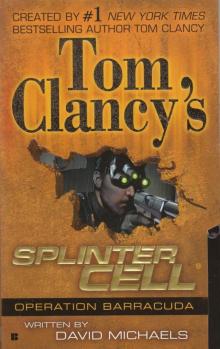 Operation Barracuda sc-2
Operation Barracuda sc-2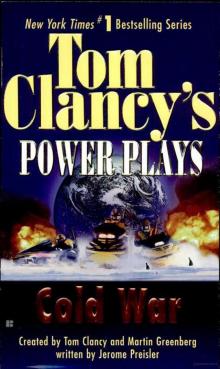 Cold War pp-5
Cold War pp-5 Point of Impact nf-5
Point of Impact nf-5 Red Rabbit jr-9
Red Rabbit jr-9 The Deadliest Game nfe-2
The Deadliest Game nfe-2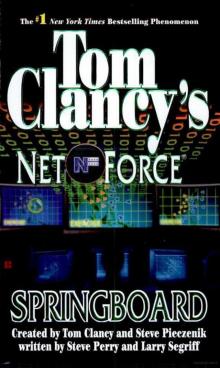 Springboard nf-9
Springboard nf-9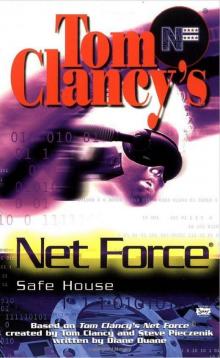 Safe House nfe-10
Safe House nfe-10 EndWar e-1
EndWar e-1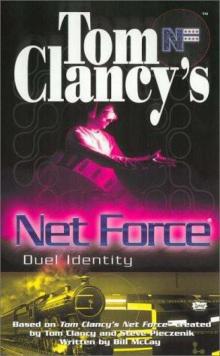 Duel Identity nfe-12
Duel Identity nfe-12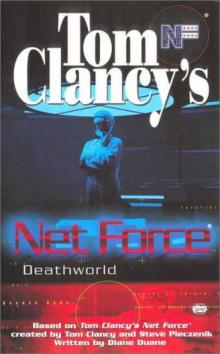 Deathworld nfe-13
Deathworld nfe-13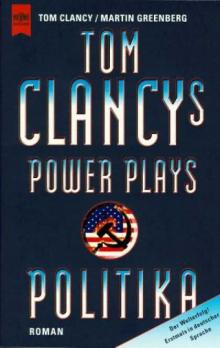 Politika pp-1
Politika pp-1 Rainbow Six jr-9
Rainbow Six jr-9 Tom Clancy's Power Plays 1 - 4
Tom Clancy's Power Plays 1 - 4 Endgame sc-6
Endgame sc-6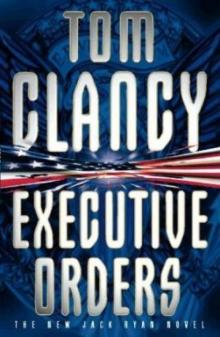 Executive Orders jr-7
Executive Orders jr-7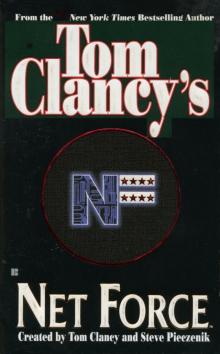 Net Force nf-1
Net Force nf-1 Call to Treason o-11
Call to Treason o-11 Locked On jrj-3
Locked On jrj-3 Against All Enemies
Against All Enemies The Sum of All Fears jr-7
The Sum of All Fears jr-7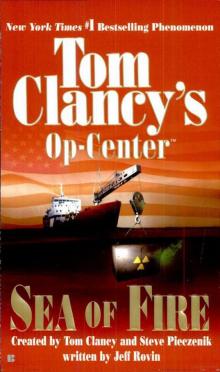 Sea of Fire o-10
Sea of Fire o-10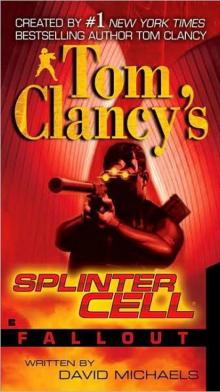 Fallout sc-4
Fallout sc-4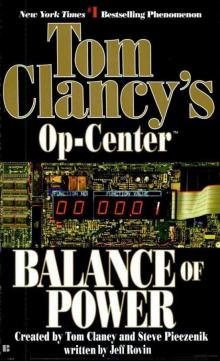 Balance of Power o-5
Balance of Power o-5 Shadow Watch pp-3
Shadow Watch pp-3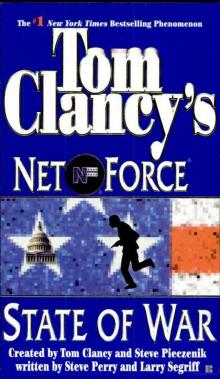 State of War nf-7
State of War nf-7 Wild Card pp-8
Wild Card pp-8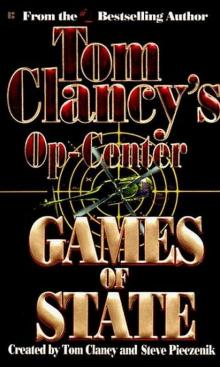 Games of State o-3
Games of State o-3 Death Match nfe-18
Death Match nfe-18 Against All Enemies mm-1
Against All Enemies mm-1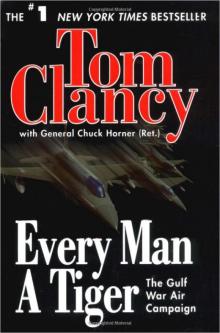 Every Man a Tiger: The Gulf War Air Campaign sic-2
Every Man a Tiger: The Gulf War Air Campaign sic-2 Cybernation nf-6
Cybernation nf-6 Support and Defend
Support and Defend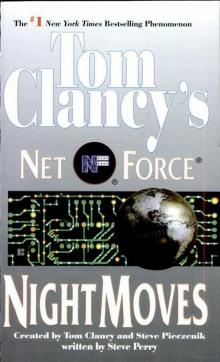 Night Moves nf-3
Night Moves nf-3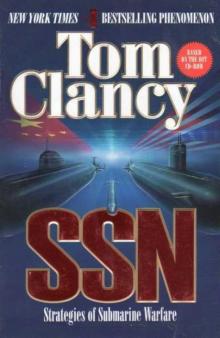 SSN
SSN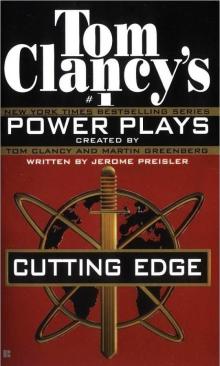 Cutting Edge pp-6
Cutting Edge pp-6 The Cardinal of the Kremlin jrao-5
The Cardinal of the Kremlin jrao-5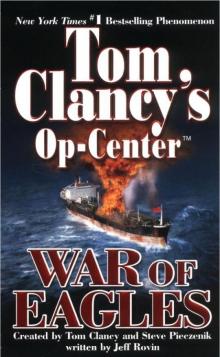 War of Eagles o-12
War of Eagles o-12 Op-Center o-1
Op-Center o-1 Mirror Image o-2
Mirror Image o-2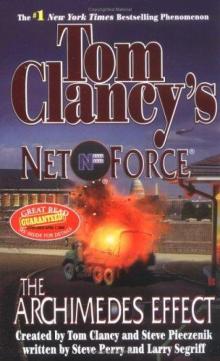 The Archimedes Effect nf-10
The Archimedes Effect nf-10 Teeth of the Tiger jrj-1
Teeth of the Tiger jrj-1 Bio-Strike pp-4
Bio-Strike pp-4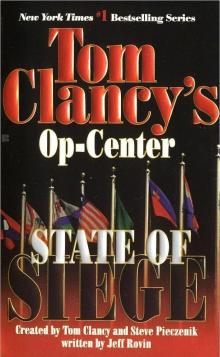 State of Siege o-6
State of Siege o-6 Debt of Honor jr-6
Debt of Honor jr-6 Zero Hour pp-7
Zero Hour pp-7 Ghost Recon gr-1
Ghost Recon gr-1 Command Authority jr-10
Command Authority jr-10 Tom Clancy's Power Plays 5 - 8
Tom Clancy's Power Plays 5 - 8 Checkmate sc-3
Checkmate sc-3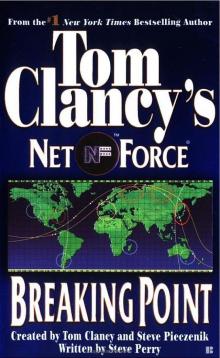 Breaking Point nf-4
Breaking Point nf-4 Gameprey nfe-11
Gameprey nfe-11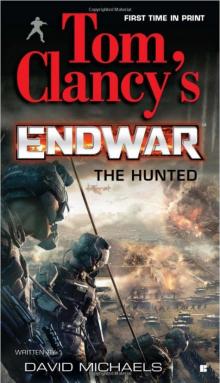 The Hunted e-2
The Hunted e-2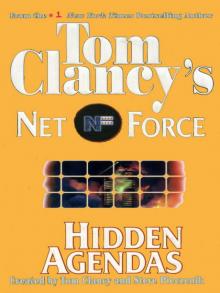 Hidden Agendas
Hidden Agendas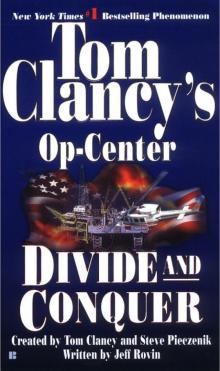 Divide and Conquer o-7
Divide and Conquer o-7